Lipid Metabolism
Lipid Metabolism Overview
Lipids are a diverse group of molecules, including fats, oils, phospholipids, and sterols. They play critical roles in energy storage, cell membrane structure, and signaling. Lipid metabolism encompasses the processes of synthesis, degradation, and utilization of lipids.
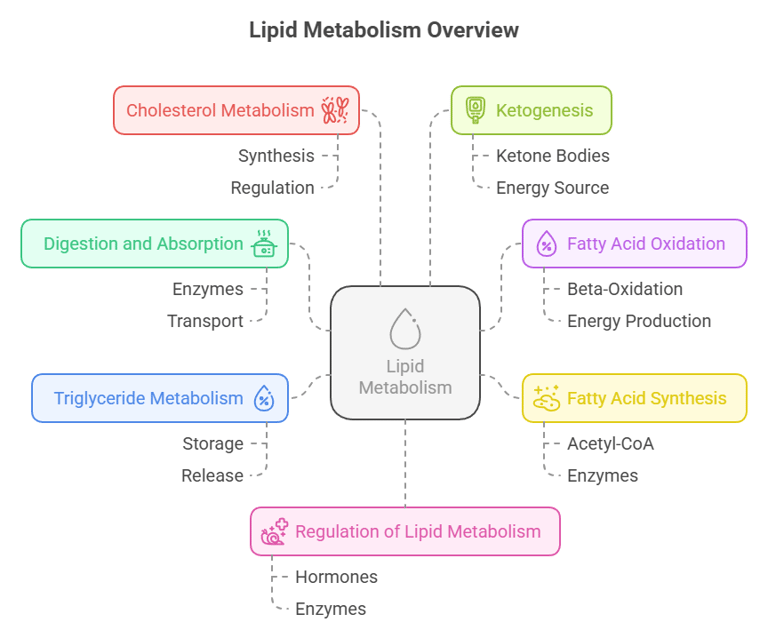

1. Digestion and Absorption of Lipids
1. Digestion and Absorption of Lipids
Enzymes Involved: Lipase (pancreatic lipase), phospholipase, and cholesterol esterase.
Steps:
Emulsification by bile salts.
Hydrolysis of triglycerides into monoglycerides and free fatty acids.
Formation of micelles for absorption in the intestinal cells.
Clinical Relevance: Disorders like malabsorption syndromes and steatorrhea.

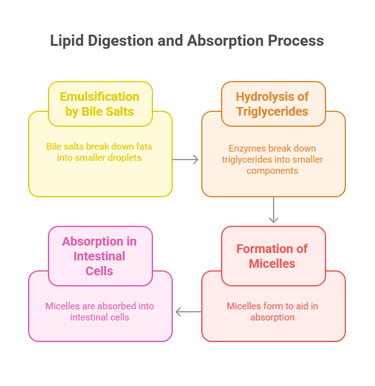
2. Fatty Acid Oxidation (Beta-Oxidation)
2. Fatty Acid Oxidation (Beta-Oxidation)
Location: Mitochondrial matrix.
Steps:
Activation of fatty acids to acyl-CoA.
Transport into mitochondria via the carnitine shuttle.
Sequential removal of two-carbon units as acetyl-CoA.
Energy Yield: Each cycle produces NADH, FADH2, and acetyl-CoA.
Clinical Relevance: Defects in beta-oxidation enzymes can lead to conditions like medium-chain acyl-CoA dehydrogenase deficiency (MCAD).
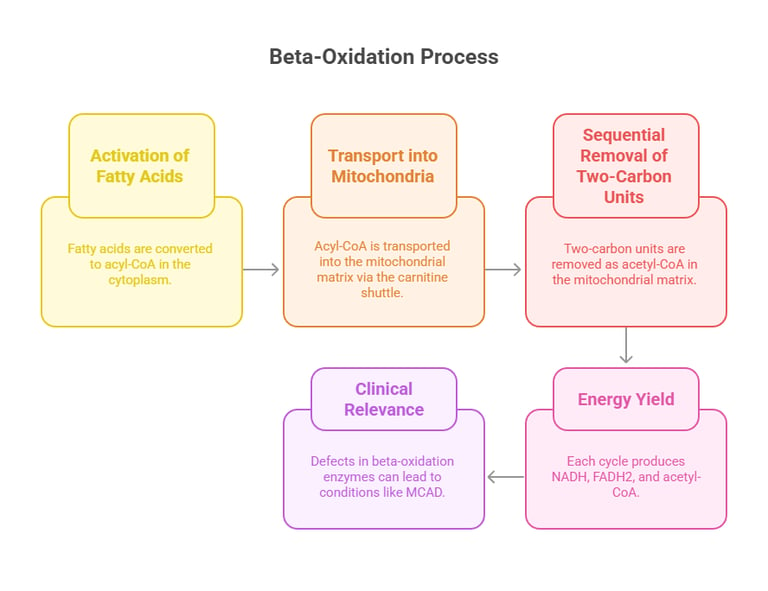

3. Fatty Acid Synthesis
Fatty Acid Synthesis
Location: Cytoplasm.
Key Enzyme: Fatty acid synthase.
Steps:
Acetyl-CoA is converted to malonyl-CoA by acetyl-CoA carboxylase.
Sequential addition of two-carbon units to form palmitate.
Regulation: Insulin promotes synthesis; glucagon inhibits it.
Clinical Relevance: Dysregulation can contribute to obesity and metabolic syndrome.
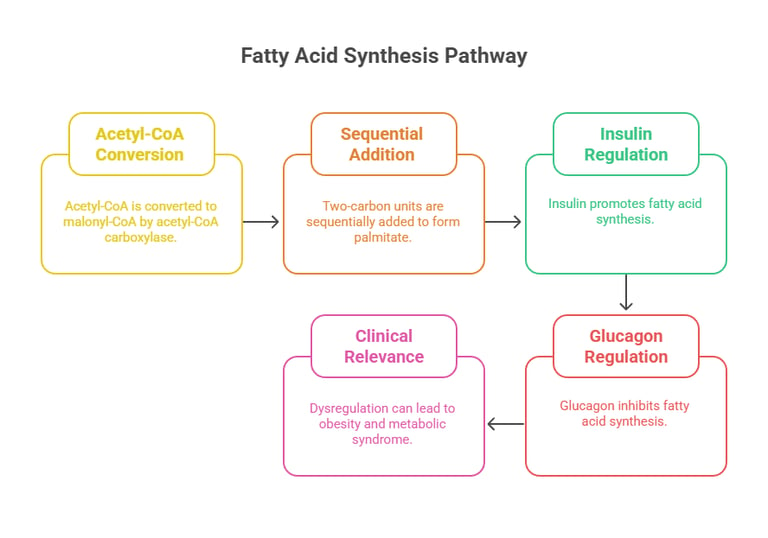

4. Triglyceride Metabolism
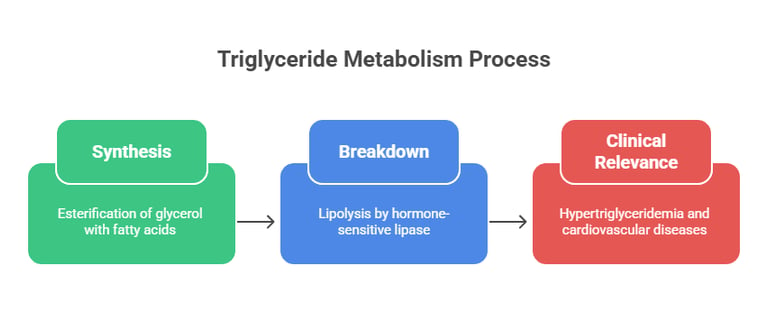

4. Triglyceride Metabolism
Synthesis: Esterification of glycerol with fatty acids.
Breakdown: Lipolysis by hormone-sensitive lipase.
Clinical Relevance: Hypertriglyceridemia and its role in cardiovascular diseases.
5. Cholesterol Metabolism
5. Cholesterol Metabolism
Synthesis: Occurs in the liver; HMG-CoA reductase is the rate-limiting enzyme.
Transport: Lipoproteins (LDL, HDL, VLDL).
Clinical Relevance: Atherosclerosis, familial hypercholesterolemia.
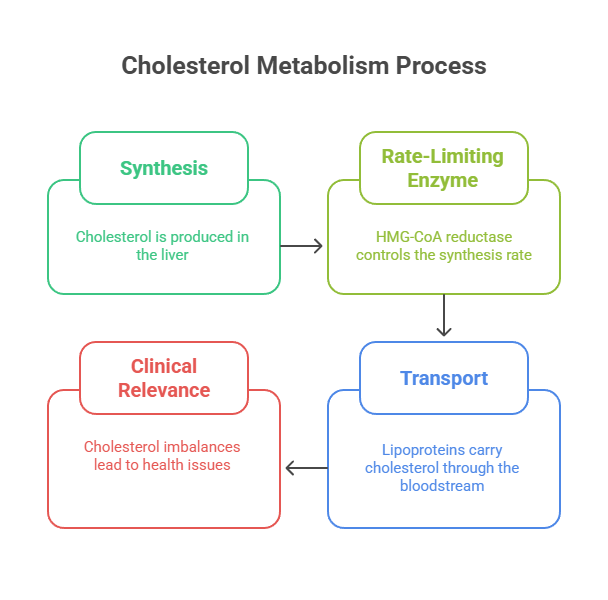

6. Ketogenesis
6. Ketogenesis
Location: Liver mitochondria.
Steps:
Conversion of acetyl-CoA into ketone bodies (acetoacetate, beta-hydroxybutyrate, and acetone).
Clinical Relevance: Ketosis in diabetes mellitus and starvation.
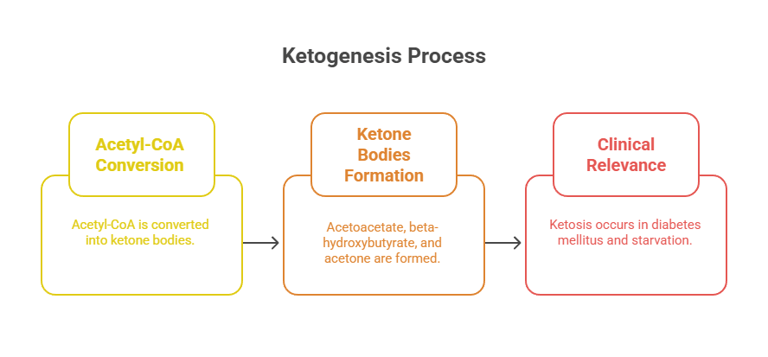

7. Regulation of Lipid Metabolism
Hormonal Control: Insulin, glucagon, epinephrine.
Enzymatic Regulation: Key enzymes like HMG-CoA reductase, acetyl-CoA carboxylase.
Clinical Relevance: Dyslipidemia and its management.
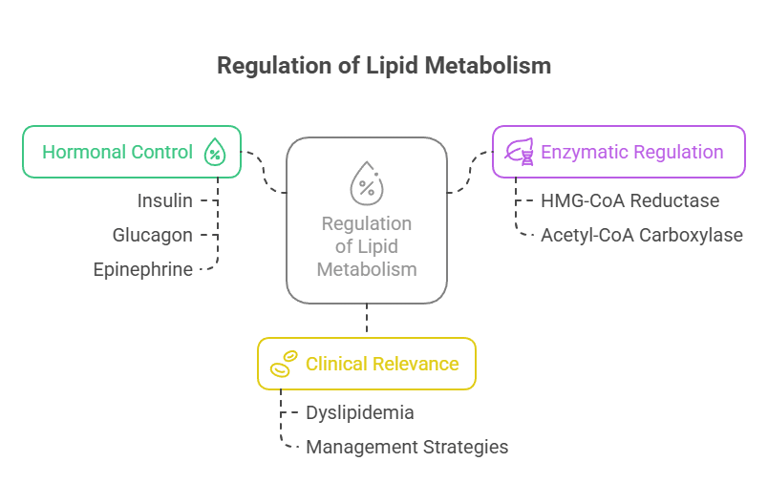

7. Regulation of Lipid Metabolism
BLOG
Join us to explore medical biochemistry intricacies.
WRITE TO US
© 2024. All rights reserved.
